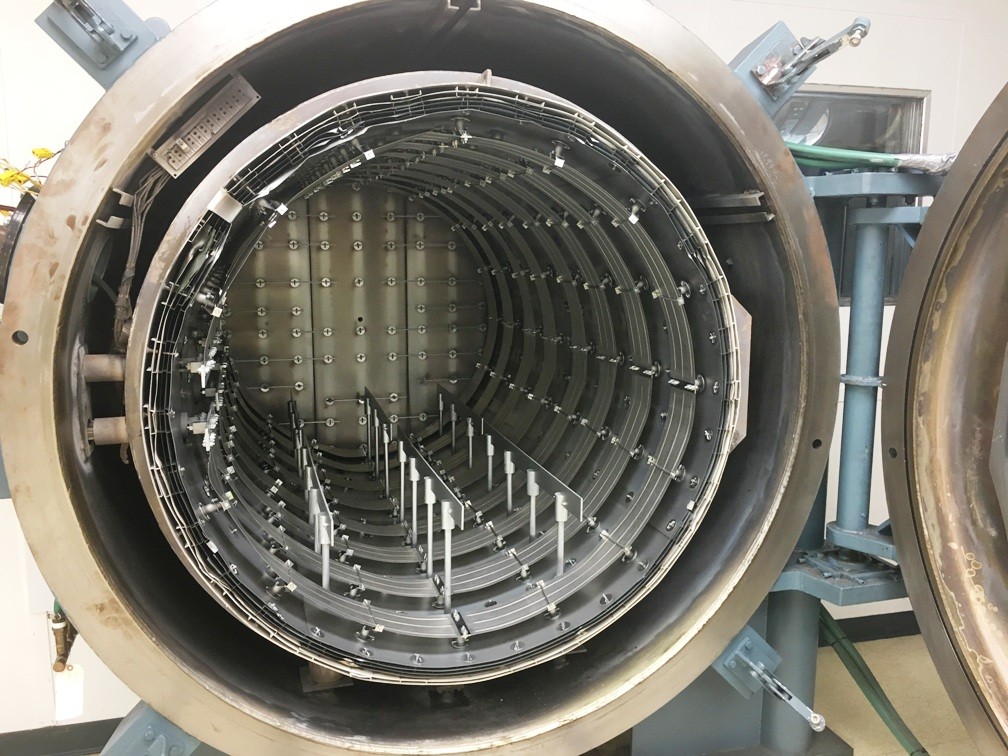Trends and Developments In Vacuum Furnace Technology Presented By David Pye
Trends and developments in vacuum furnace technology
For many years vacuum processing technology was considered to be the ‘Cinderella’ of metallurgical processing technology, having had its humble beginnings in the aerospace industry, and initially used for stress relieving, annealing and normalizing of aircraft materials. The technology of vacuum has been subsequently used for the heat treatment of more exotic materials and now has found its place in the field of tool steel heat treatment and brazing process technology. The commercialization of vacuum processing technology began in the early 1940s without the realization of its potential value for the future.
The technology tended to ‘limp along’ in its growth arena thus recognizing that it was (for those who would invest in that technology). The writer believed that vacuum processing technology was in effect, Pandora’s box which began to open very slowly. As the lid of the so-called box began to open, it began to motivate furnace manufacturers and heat treaters alike, to see of the potential opportunities to be ’the vehicle’.
Vacuum processing technology began to really gain recognition in the late 1980s when experimentation to develop for example, tool steel heat treatment. This was accomplished simply by redesign of the basic vacuum furnace is to high pressure gas quenching making full use of nitrogen as the cooling medium. However, it was somewhat limited in its overpressure. During the early 1990s further development work was seriously considered to take the maximum overpressure for quenching (20 bar over pressure) using now, nitrogen blended with helium. This meant that the manipulation of the ratio of helium with nitrogen, one can now blend the nitrogen helium gas mix that will best address the appropriate cool down rate from the austenitizing temperature in order to create martensite.
In the late 1990s, further investigatory work was conducted to enable process’s such as carburizing, carbonitriding and to give to heat treaters the ability to raise the carburizing process temperature to almost 1700°F which means that one will accomplish a very short process time for the carbon to diffuse into the surface of the steel.
With the conventional integral quench furnaces, one is limited by the type of refractory insulation material, in order to reduce the cold face temperature (external furnace casing). The visible evidence of new technology in the field of vacuum processing has made a great stride in so much as it has now opened many doors for thermal processing as well as an improvement in quality assurance to the end user.
Vacuum processing technology is the vehicle that is now carrying;
- Thermo-chemical diffusion techniques such as nitriding, carbo-nitriding, Ferritic Nitrocarburizing, Carbo-nitriding carburizing.
- Thermo-chemical deposition techniques
- Ion implantation.
Vacuum processing technology is an exciting method that leads us into some very dramatic and exciting engineering concept changes, but on the other hand, it started the opening of ‘Pandora’s Box.’
By that statement I am meaning that it is exposing a skills shortage. And as the writer has witnessed many different countries there is no such thing as a labor shortage. What there is, is a skills shortage in critical in many of the technical fields. The metallurgical processing discipline is one of the industries that is faced with the skills shortage problem. Which means that there is an international shortage of skilled heat treatment technicians to allow vacuum processing technology to become the vanguard of both technology and competence.
In today’s international world, a great deal is known about vacuum processing technology, but not too much is known by the majority. That means the shop floor technicians who have the ability to ‘make or break’ the component that they are treating. The writer believes that the key to this lack of processing knowledge on the shop floor can easily be uplifted for the heat treatment technician.
Vacuum processing technology is the key to many new process techniques for industrial purposes. Along with all of the above, new materials are developing for most engineering industries such as;
- Aerospace. The writer wrote some time ago about the Moon to Mars mission and it set the writer to thinking the length of time it will take for the crew transporter from the moon and on to Mars will be a journey that has never been undertaken before by mankind. The new materials that have been developed and are being developed, the heat treatment is the key to protecting the astronauts on an approximate 10-month journey to Mars, as well has providing a safe environment for the astronauts when they reach the planet Mars. Just how long the astronauts will remain on the Mars surface is not yet known (or not yet been published) and then there is the journey back to the moon which would be again another 10 months.
- Defense. With the many conflicts that are occurring on both land and sea and air throughout the world, new materials are being developed as well as the new processing techniques. The writer means in this area, weapons of personal defense, weapons with extended ranges to be remotely controlled and delivered, all are going to require new materials and new process techniques. Once again this will necessitate for the process technicians and understanding of the materials and what treatment must be given to extend the life of the weapons. This, the writer believes is where there will be a dramatic need for the heat treatment technician on the shop floor, as it is he (that can make or break the product.

